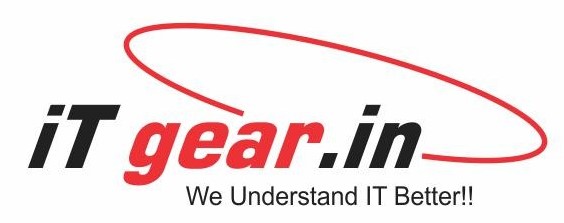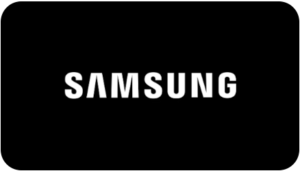- 07821987284
- 09850557001
- sales@itgear.co.in
- Bhelke Chowk, Kothrud, Pune-411038
Interactive Display
Samsung Interactive Display are with Infrared Technology, easy and smooth with writing and drawing experiences

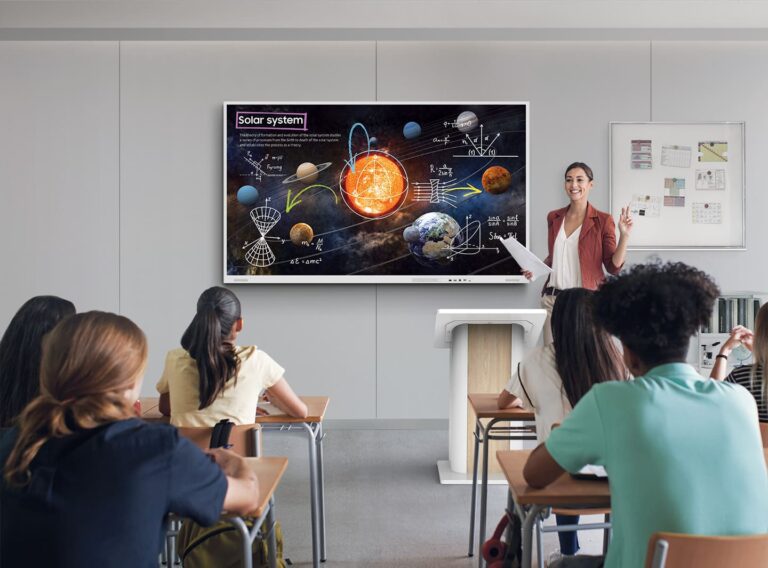
Samsung smart board display
An interactive display is a type of display technology that allows users to interact with the content displayed on the screen. These displays typically have touch-screen capabilities and can respond to user gestures such as swiping, tapping, or pinching.
Interactive displays are commonly used in a variety of settings such as classrooms, boardrooms, trade shows, museums, and retail environments.
Samsung Interactive display have three different module, 1. Flip, 2. Flip 3, Flip Pro
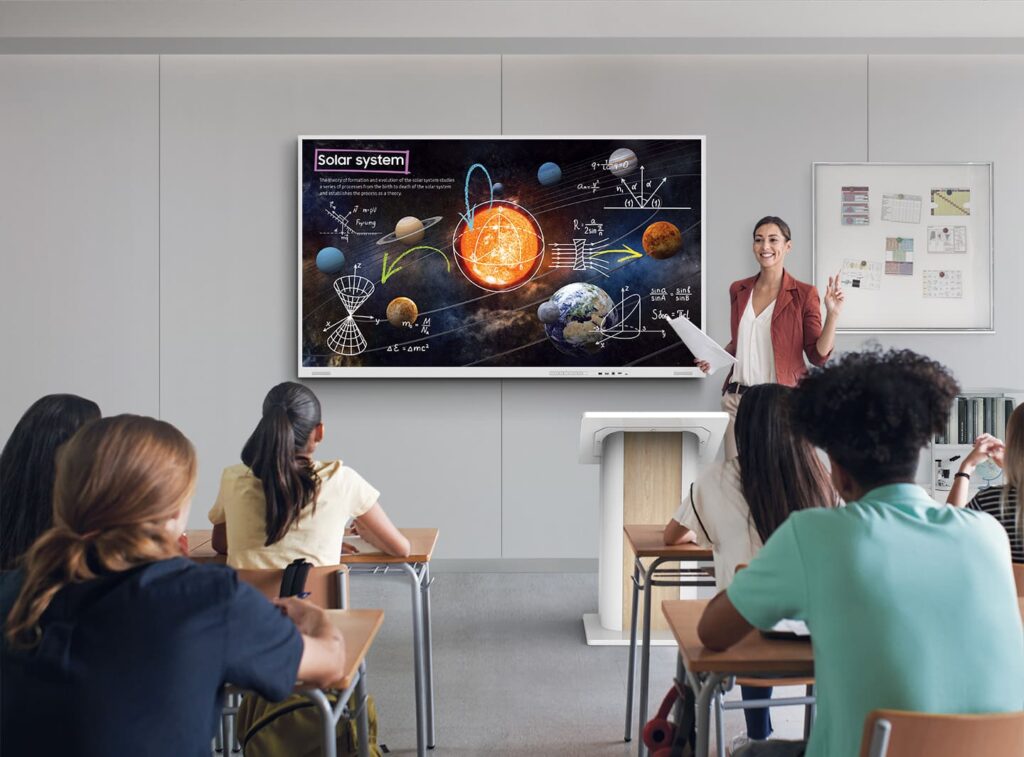
Features and Benefits
- Drawing experience with 2,048 points of pressure with industry-best latency at just 26ms
- Samsung Flip comes with sizes 55 inches, 65 inches, 75 inches, 85 inches
- 4K Resolutions
- 3 years Warranty
- Mobile andLaptop screen mirroring
- With SmartView+, up to 50 devices can be simultaneously connected to the interactive display wirelessly.
- smooth touch
- quick tool and palette Multiple connectivity including USB, HDMI, DP and OPS slot and easy screen sharing via wireless.
- Explore embedded education solutions from Boxlight or web browser for any online source
Interactive display with different Model
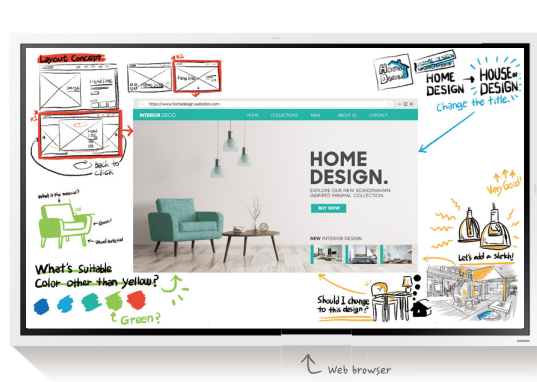
FLIP 2 ( WMR)
This Interactive display comes with 55 inches and 65 Inches , Samsung Flip allows you to enjoy a smooth, pen-to-paper-like writing experience
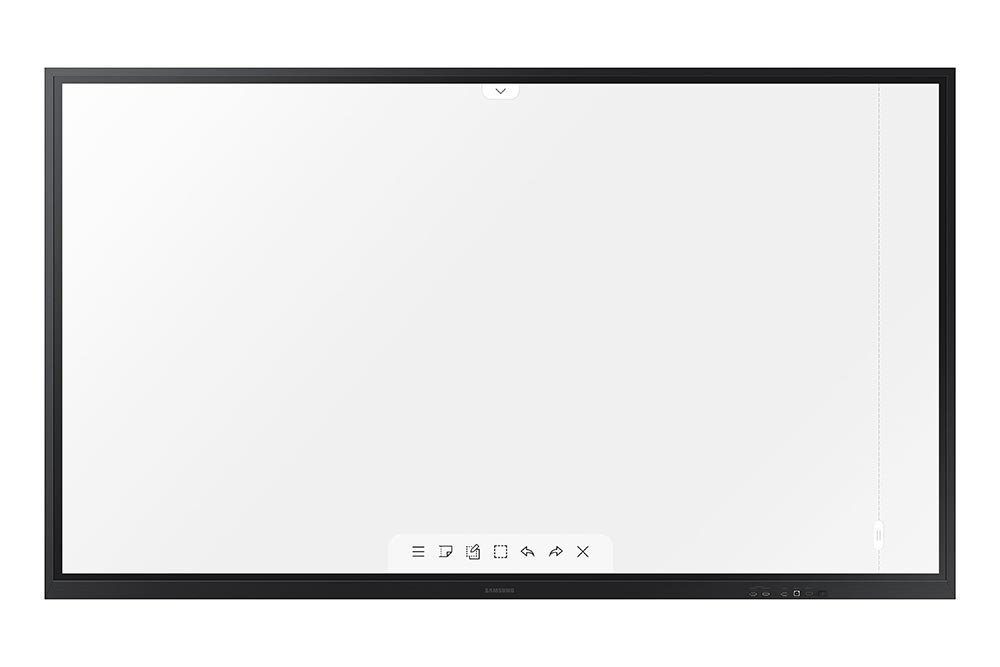
FLIP 3 ( WMA)
A writing experience with pen and brush mode, quick tool Multiple connectivity including USB, HDMI, DP and OPS slot and easy screen sharing via wireless
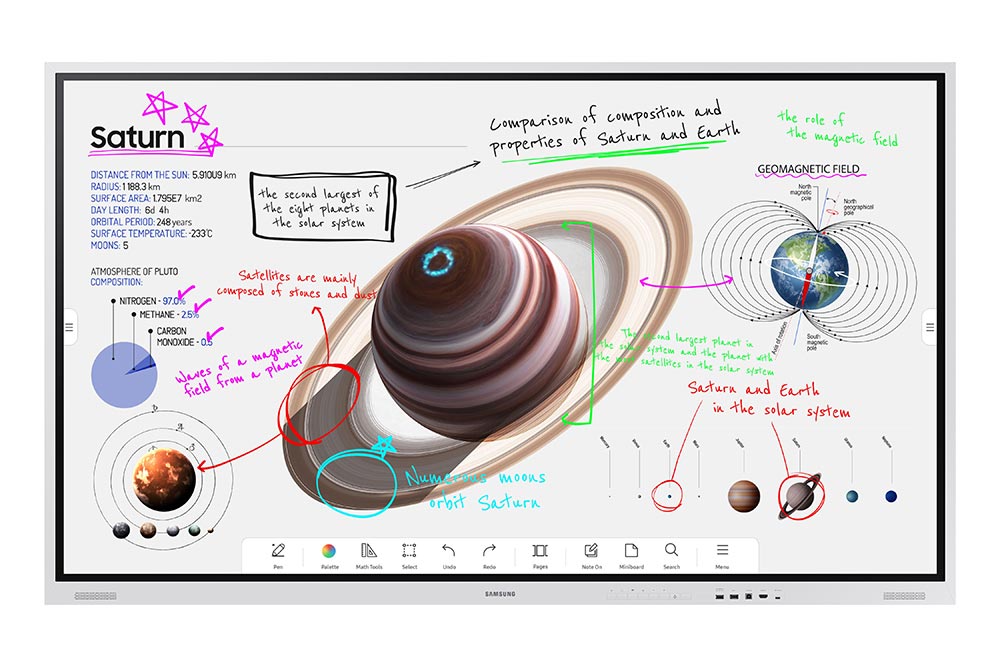
FLIP PRO ( WMB)
Realistic drawing with the industry’s fastest speed with 34ms latency and 2,048 points of screen pressure eb browser for any online source
Use of Interactive display
Interactive displays have a wide range of uses in various settings, including education, business, entertainment, and healthcare. Some of the most common uses of interactive displays include:
Education: Interactive displays are widely used in classrooms and lecture halls to facilitate interactive learning. With interactive displays, teachers can create more engaging and interactive lessons by incorporating multimedia elements, such as videos, images, and animations. Students can also interact with the displays using touch or stylus, making learning more interactive and immersive.
Business: Interactive displays are used in business settings for presentations, meetings, and conferences. They enable presenters to create more engaging presentations by incorporating multimedia elements, such as videos, images, and animations. Interactive displays also enable collaboration by allowing multiple users to interact with the display at the same time.
Entertainment: Interactive displays are used in entertainment settings, such as museums, theme parks, and gaming centers. They enable visitors to interact with exhibits, games, and other interactive experiences using touch or other input methods.
Healthcare: Interactive displays are used in healthcare settings to facilitate communication between patients and healthcare providers. For example, interactive displays can be used to display patient information, medical records, and other health-related information in a more engaging and interactive way.
Retail: Interactive displays are used in retail settings to create more engaging and immersive shopping experiences. They enable customers to interact with products, explore different options, and learn more about products in a more engaging and interactive way.
We provide Interactive display in pune
As a regional distributor of interactive displays, IT GEAR has the responsibility to provide high-quality interactive display products and services to its customers in the region. Some of the key responsibilities of a regional distributor of interactive displays include:
Product sourcing: As a distributor, IT GEAR needs to identify reliable and reputable manufacturers of interactive display products and source high-quality products that meet the needs and expectations of its customers.
Inventory management: IT GEAR needs to manage its inventory of interactive display products to ensure that it has sufficient stock to meet customer demand while avoiding excess inventory.
Sales and marketing: IT GEAR needs to promote its interactive display products and services to potential customers through various marketing channels, such as trade shows, advertising, and digital marketing.
Customer service and support: IT GEAR needs to provide excellent customer service and support to its customers, including technical support, product training, and after-sales support.
Logistics and distribution: IT GEAR needs to manage the logistics and distribution of its interactive display products, including shipping, delivery, and tracking of orders.
Overall, as a regional distributor of interactive displays, IT GEAR has a critical role to play in the supply chain, ensuring that high-quality interactive display products and services are delivered to customers in the region.
Main Basic Feature to consider while buying interactive display in pune
If you are looking to buy an interactive display in Pune, there are several key features that you should consider. These features will help ensure that you select an interactive display that meets your specific needs and requirements. Some of the main basic features to consider include:
Screen size: The screen size is an important feature to consider when selecting an interactive display. It is essential to choose a screen size that is appropriate for your needs and the available space in your room. Larger screen sizes are generally better for larger rooms, while smaller screens may be suitable for smaller rooms or for individual use.
Touch technology: The touch technology used in the interactive display is another important feature to consider. There are several types of touch technologies available, such as capacitive, resistive, and infrared. Capacitive touchscreens are the most popular and responsive, but they can be more expensive than other types.
Resolution: The display resolution is another key feature to consider when buying an interactive display. A higher resolution will provide sharper and clearer images and text, which is important if you are using the display for presentations or educational purposes.
Connectivity: The connectivity options available with the interactive display are also important to consider. You should look for displays that offer a range of input and output ports, such as HDMI, VGA, USB, and audio jacks, to ensure that you can easily connect the display to other devices and peripherals.
Software compatibility: You should also ensure that the interactive display is compatible with the software and applications you plan to use it with. Some displays may require specific software or drivers to be installed, so it is important to check compatibility before making a purchase.
Overall, these are some of the main basic features to consider when buying an interactive display in Pune. By carefully considering these features, you can select a display that meets your needs and delivers the performance and functionality you require
